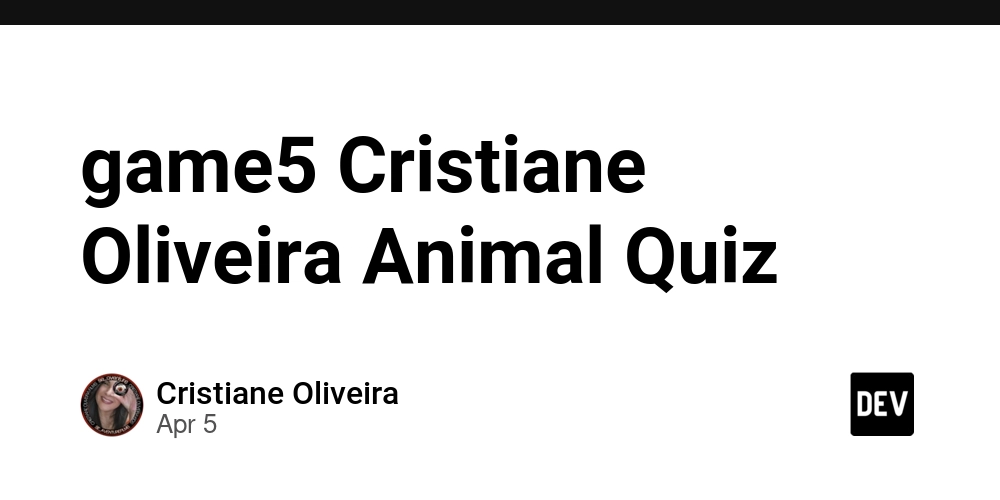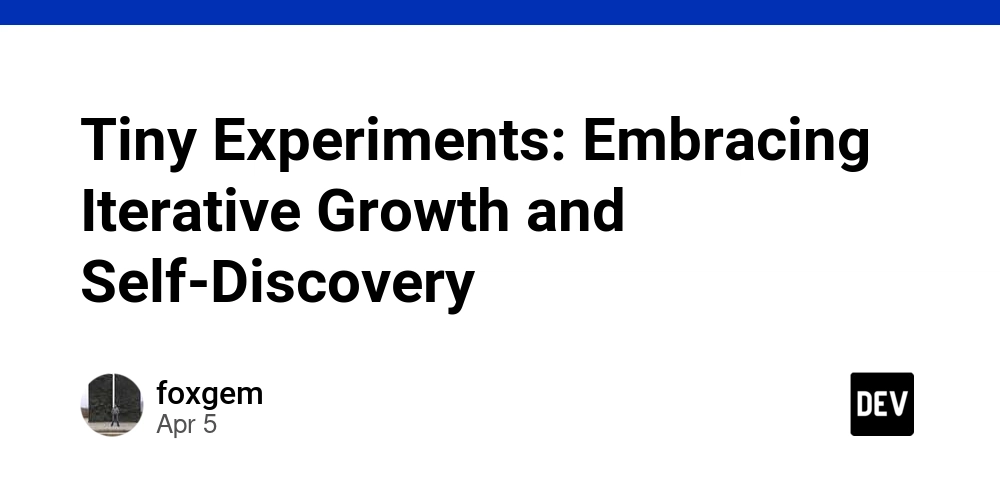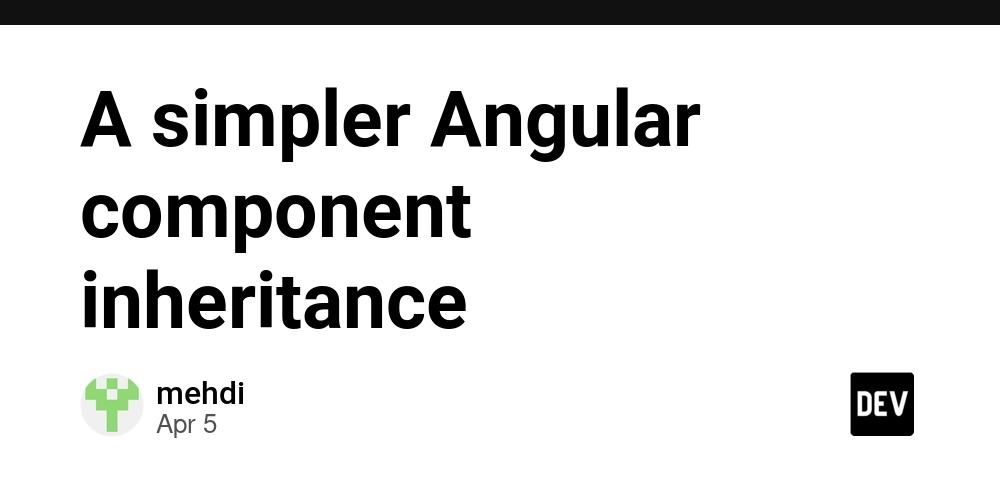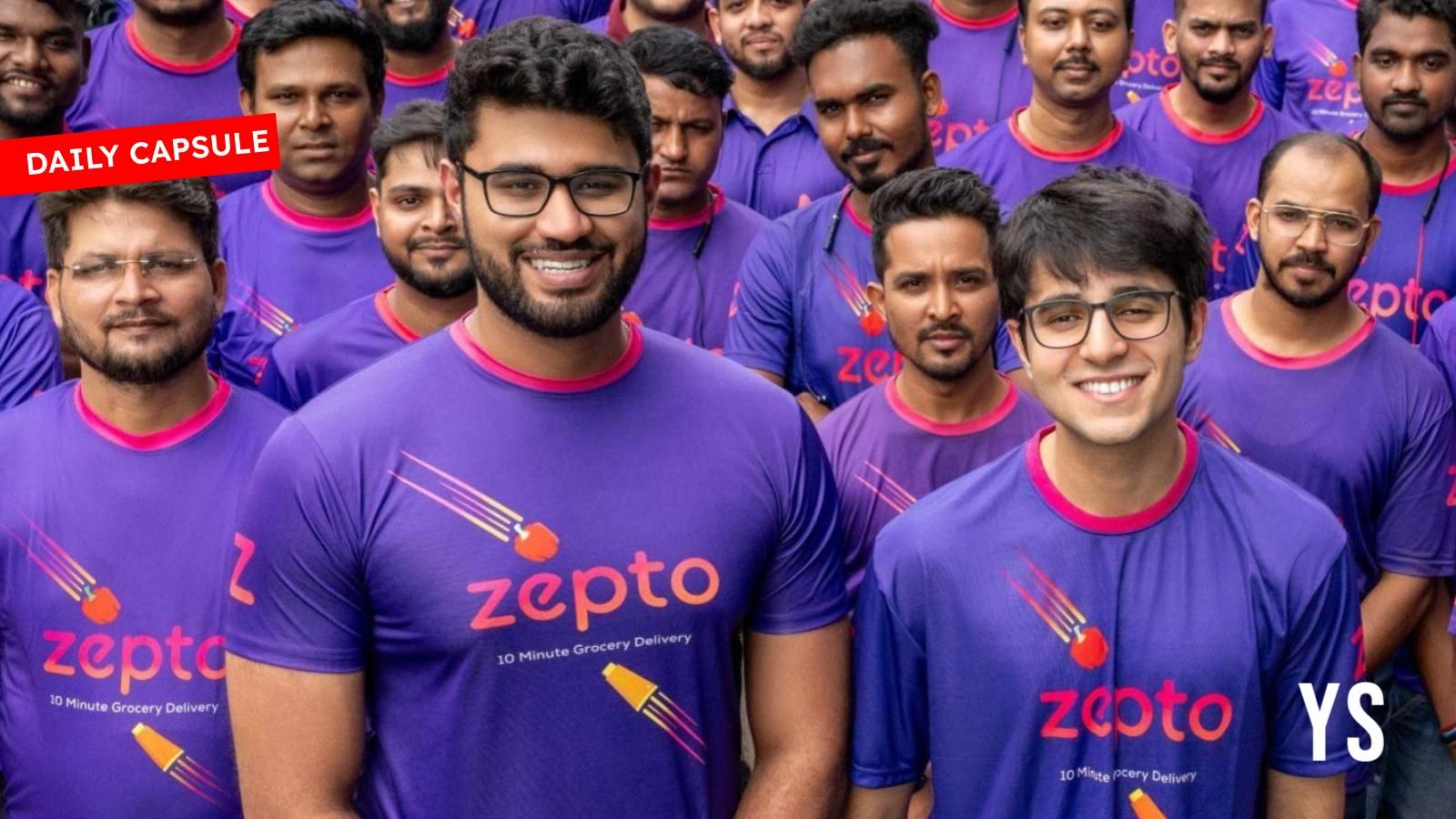Write for Towards Data Science
Quick Links: Why become a contributor? We are looking for writers to propose up-to-date content focused on data science, machine learning, artificial intelligence and programming. If you love to write about these topics, read on! Reach a broader audience with your articles. We are one of the most popular data science sites in the world. […] The post Write for Towards Data Science appeared first on Towards Data Science.

Quick Links:
- Submission Guidelines
- How To Submit Your Work
- How to get your article ready for publication!
- Adding and using images
- Longform posts, columns, and online books
- FAQ
Why become a contributor?
We are looking for writers to propose up-to-date content focused on data science, machine learning, artificial intelligence and programming. If you love to write about these topics, read on!
Reach a broader audience with your articles. We are one of the most popular data science sites in the world. TDS started as a publication on Medium, amassing more than 700k followers and becoming the most-read publication on the site. Now on a self-hosted platform, TDS is the leading destination in the data science community.
Here are a few things we do to ensure your articles reach the largest audience possible:
- Our independent domain (towardsdatascience.com) provides better visibility and direct traffic to your work.
- We feature our best stories on our homepage, newsletter, and social media (LinkedIn, X, and more), and provide our authors with sophisticated publishing tools to better tell their stories.
- We provide editorial support to help refine and amplify high-quality submissions.
Submission Guidelines
Before submitting your article, there are a few essential things you need to know. Make sure you read each point well, and that you understand them, as by submitting an article to TDS, you are agreeing to comply with all of them.
Please take a few minutes to familiarize yourself with our Author Terms and Conditions of Use, as well as our Privacy Policy — they govern the relationship between contributors and TDS.
Any article you share with us must be entirely your own original work; you can’t take other writers’ words and present them as your own, and we also don’t allow AI-generated text, even when you’re the one who prompted its creation.
How To Submit Your Work
Recently, TDS made a big leap toward independence by moving off Medium and launching our self-hosted platform. We’re working swiftly to roll out an author portal that will streamline article pitches and feedback.
In the meantime, please send your upcoming article directly to our team using this form.
If you’re having an issue with our online form, please let us know via email (publication@towardsdatascience.com) so we can help you complete the process. Please do not email us an article that you have already sent via our form.
Guidelines
How to get your article ready for publication!
We aim to strike a balance between innovating, informing and philosophizing. We want to hear from you! If you are not a professional writer, consider the following points when preparing your article. We want to publish high quality, professional articles that people want to read.
1. Is your story a story that needs to be told?
Before you start writing, ask yourself: is this story a story that needs to be told?
If you have read many articles addressing the same issue or explaining the same concept, think twice before writing another one. If you have a radical, new take on an old chestnut, we want to hear from you… but, we need you to persuade us that your article is something special that distinguishes itself from the pack and speaks to our audience.
Conversely, if your article addresses an underserved area or presents a new idea or method, that’s just what we are after!
2. What is your message?
Let us know what your main message is, right from the start. Give your piece a snappy introduction that tells us:
- What is your novel idea?
- Why should we care?
- How are you going to prove your point?
Once you’ve got that out of the way, you can be as conversational as you like, but keep calling back to the central message and give us a solid conclusion.
Remember though, Towards Data Science is not your personal blog, keep it sharp and on-topic!
3. On the internet, nobody knows you are a dog
You’ve got a new idea or a new way of doing things, you want to tell the community and start a discussion. Fantastic, that’s what we want too, but we’re not going to take for granted that you know what you are talking about or that we should uncritically believe what you say… you’ve got to persuade us (your audience) that:
- The subject matter is important
- There is a gap that needs to be filled
- You have the answer
- Your solution works
- Your idea is based on a logical progression of ideas and evidence
- If you are giving us a tutorial, tell us why people would need to use this tool and why your way is better than the methods already published.
You can do this by explaining the background, showing examples, providing an experiment or just laying out how data you have extracted from various sources allowed you to synthesise this new idea.
Are there arguments that counter your opinion or your findings? Explain why that interpretation conflicts with your idea and why your idea comes out on top.
4. Do you have a short title with an insightful subtitle?
If you scroll up to the top of this page, you will see an example of a title and subtitle. Your post needs to have a short title and a longer subtitle that tell readers what your article is about or why they should read it. Your header is useful for attracting potential readers and making your intentions clear. To remain consistent and give readers the best experience possible, we do not allow titles or subtitles written in all-caps. We also ask that you avoid profanity in both your title and subtitle.
When your subtitle is directly under the title and formatted correctly, it will show up in some post previews, which helps with your click-through rate.
5. What makes your post valuable to readers?
A successful post has a clearly defined and well-scoped goal, and follows through on its promise. If your title tells us you’re going to unpack a complex algorithm, show the benefits of a new library, or walk us through your own data pipeline, make sure the rest of the post delivers.
Here are a few pointers to help you plan and execute a well-crafted post:
1. Decide what your topic is — and what it isn’t
If you’re not sure what your post is going to be about, there’s very little chance your audience will when they read it. Define the problem or question your article will tackle, and stick to it: anything that doesn’t address the core of your post should stay out.
2. Create a clear plan
With your topic in hand, sketch out a clear structure for your post, and keep in mind the overall structure it’ll follow. Remember that your main goal is to keep your reader engaged and well-oriented, so it’s never too early to think about formatting and how you’ll break down the topic into digestible sections. Consider adding section headings along the way to make your structure visible.
3. Use clear, action-driven language
If you’re still finding your personal voice as a data-science author, a good place to start is keeping things clean, clear, and easy to follow.
If your article is full of neutral, generic verbs (like to be, have, go, become, make, etc.), try to mix in more precise action verbs. When it makes sense, use specific, lively descriptors instead of dull ones (for example, you could replace “easy” with “frictionless,” “accessible,” or “straightforward,” depending on the context).
There are few things editors appreciate more than a clean first draft, so don’t forget to proofread your post a couple of times before sharing it with TDS: look for spelling, punctuation, and grammar issues, and do your best to fix them. What we hope to offer to our readers are clear explanations, a smooth overall flow — pay attention to those transitions! — and a strong sense of what you’re aiming to achieve with your post.
If you’d like to expand your toolkit beyond the basics, the Internet is full of great writing resources. Here are a few ideas to help you get started:
- Writing for an academic journal: 10 tips. The Guardian
- 6 of the Best Pieces of Advice from Successful Writers
- Steven Pinker’s Sense of Style
4. Include your own images, graphs, and gifs
One of the most effective ways to get your key points across to your readers is to illustrate them with your compelling visuals.
For example, if you’re talking about a data pipeline you built, text can only take you so far; adding a diagram or flowchart could make things even clearer. If you’re covering an algorithm or another abstract concept, make it more concrete with graphs, drawings, or gifs to complement your verbal descriptions. (If you’re using images someone else created, you’ll need to source and cite them carefully — read our image guidelines below for more details.)
A strong visual component will hook your readers’ attention and guide them along as they read your post. It will also help you develop a personal style as an author, grow your following, and draw more attention on social media.
6. Are your code and equations well displayed?
TDS readers love to tinker with the ideas and workflows you share with them, which means that including a code implementation and relevant equation(s) in your post is often a great idea.
To make code snippets more accessible and usable, avoid screenshots. Use WordPress’s code blocks & inline code
To share math equations with your readers, Embed.fun is a great option. Alternatively, you can use Unicode characters and upload an image of the resulting equation.
When you include code or an equation within your article, be sure to explain it and add some context around it so readers of all levels can follow along.
To learn more about using these embeds and others in your post, check out this resource.
7. Check your facts
Whenever you provide a fact, if it’s not self-evident, let us know where you learned it. Tell us who your sources are and where your data originated. If we want to have a conversation we all need to be on the same page. Maybe something you say will spark a discussion, but if we want to be sure we are not at cross purposes, we need to go back to the original and read for ourselves in case we are missing a vital piece of the puzzle that makes everything you say make sense.
8. Is your conclusion to the point and not promotional?
Please make sure that you include a conclusion at the end of your article. It’s a great way to help your readers review and remember the essential points or ideas you’ve covered. You can also use your conclusion to link an original post or a few relevant articles.
Adding an extra link to your author profile or to a social media account is fine, but please avoid call-to-action (CTA) buttons.
For your references, please respect this format:
[X] N. Name, Title (Year), Source
For example, your first reference should look like this:
[1] A. Pesah, A. Wehenkel and G. Louppe, Recurrent Machines for Likelihood-Free Inference (2018), NeurIPS 2018 Workshop on Meta-Learning
9. Are your tags precise enough?
The more specific your tags, the easier it is for readers to find your article and for us to classify and recommend your post to the relevant audience.
We may change one or two tags before publication. We would do this only to keep our different sections relevant to our readers. For instance, we would want to avoid tagging a post on linear regression as “Artificial Intelligence”.
10. Do you have an amazing image?
A great image attracts and excites readers. That’s why all the best newspapers always display incredible pictures.
This is what you can do to add a fantastic featured image to your post:
- Use Unsplash. Most of the content on Unsplash is fine to use without asking for permission. You can learn more about their license here.
- Take one yourself. Your phone is almost certainly good enough to capture a cool image of your surroundings. You might even already have an image on your phone that would make a great addition to your article.
- Make a great graph. If your post involves data analysis, spend some time making at least one graph truly unique. You can try R, Python, D3.js or Plotly.
If you decide to purchase a license for an image to be used in your article, please note that we only allow the use of images under a license that: (i) does not expire; and (ii) that can be used for commercial purposes on the TDS Publication. You are responsible for ensuring you comply with the license terms of use. You must also include a caption below the image, as follows, or as otherwise required by the license provider: “Image via [license provider’s name] under license to [your name].” Finally, please email us a copy of a receipt or other evidence of the purchased license, along with the corresponding license terms of use.
If you’ve chosen to create images for your article using an AI tool (like DALL·E 2, DALL·E, Midjourney, or Stable Diffusion, among others), it’s your responsibility to ensure that you’ve read, understood, and followed the tool’s terms. Any image you use on TDS must be licensed for commercial use, including AI-generated images. Not all AI tools permit images to be used for commercial purposes and some require payment to permit you to use the image.
The images you generate with AI tools cannot violate the copyright of other creators. If the AI generated image resembles or is identical to an existing copyrighted image or fictional character (like Harry Potter, Fred Flinstone etc.), you are not permitted to use it on TDS. Use your best judgment and avoid AI-generated images that copy or closely emulate another work. If in doubt, use an image search tool — like Google Lens, TinEye, or others — to check whether your images are too similar to an existing work. We may also ask that you provide details of the text prompts you used in the AI tool to confirm you did not use the names of copyrighted works.
Your text prompts cannot use the names of real people, nor can your images be used if they feature a real person (whether a celebrity, politician, or anyone else).
Please remember to cite the source of your images even if you aren’t legally obligated to do so. If you created an image yourself, you can add (Image by author) in the caption. Whichever way you decide to go, your image source should look like this:



Your image should both have the source and the link to that source. If you created an image yourself, you can add “Image by author”.
If you’ve created an image that was lightly inspired by an existing image, please add the caption “Image by Author, inspired by source[include the link].” If you’ve edited an existing image, please make sure you have the right to use and edit that image and include the caption “Image by source[include the link], edited with permission by the author.”






















































.jpg)
%20Abstract%20Background%20112024%20SOURCE%20Amazon.jpg)



















































































































![[The AI Show Episode 142]: ChatGPT’s New Image Generator, Studio Ghibli Craze and Backlash, Gemini 2.5, OpenAI Academy, 4o Updates, Vibe Marketing & xAI Acquires X](https://www.marketingaiinstitute.com/hubfs/ep%20142%20cover.png)
































































































































![From drop-out to software architect with Jason Lengstorf [Podcast #167]](https://cdn.hashnode.com/res/hashnode/image/upload/v1743796461357/f3d19cd7-e6f5-4d7c-8bfc-eb974bc8da68.png?#)




































































































.png?#)





.jpg?#)
































_Christophe_Coat_Alamy.jpg?#)










































































































![Rapidus in Talks With Apple as It Accelerates Toward 2nm Chip Production [Report]](https://www.iclarified.com/images/news/96937/96937/96937-640.jpg)











































































































































